Echoes of Babylon: Traces of Jewish Life in Exile
Explore where Jewish communities lived and prayed during the Babylonian Exile with insights from the book 'Biblical Archaeology: Part IV'.
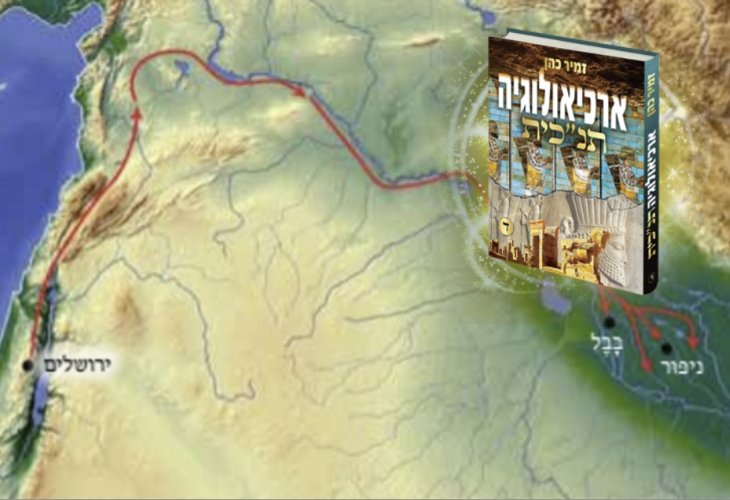
To weaken conquered nations, prevent uprisings, and strengthen their empire, Babylonian kings would exile large numbers of people from captured lands, resettling them in Babylon. The people of the Kingdom of Judah were no exception. After Babylon's military campaigns through Judah, its residents were relocated to Babylon in what is historically known as the 'Babylonian Exile.'
Crying by the Rivers of Babylon
Researchers surmise that the exiles trudged to Babylon on a route that took them north from Israel, from Judah to Syria, and then south along the Euphrates River into Babylon. This path traversed a fertile and populated region, far safer than the shorter but perilous desert route east of Jordan.
The deep sorrow experienced by the people of Judah is eloquently captured in the famous lamentations from Psalms that start with 'By the rivers of Babylon.' The exiles describe their location by rivers, as Babylon was traversed by two great rivers—the Euphrates and Tigris. These rivers fed large irrigation channels throughout the land, channels referred to as 'rivers' in Babylon. They were also used for boat transport and fishing.
"By the rivers of Babylon, there we sat and also wept when we remembered Zion.
On the willows [poplar trees] within it, we hung our harps.
For there our captors demanded songs of us, and our tormentors [mockers who jest us] joy.
Sing us one of the songs of Zion!
How shall we sing the LORD's song in a foreign land?
If I forget you, Jerusalem, let my right hand forget its skill!
Let my tongue cling to the roof of my mouth if I do not remember you,
if I do not exalt Jerusalem above my chief joy."
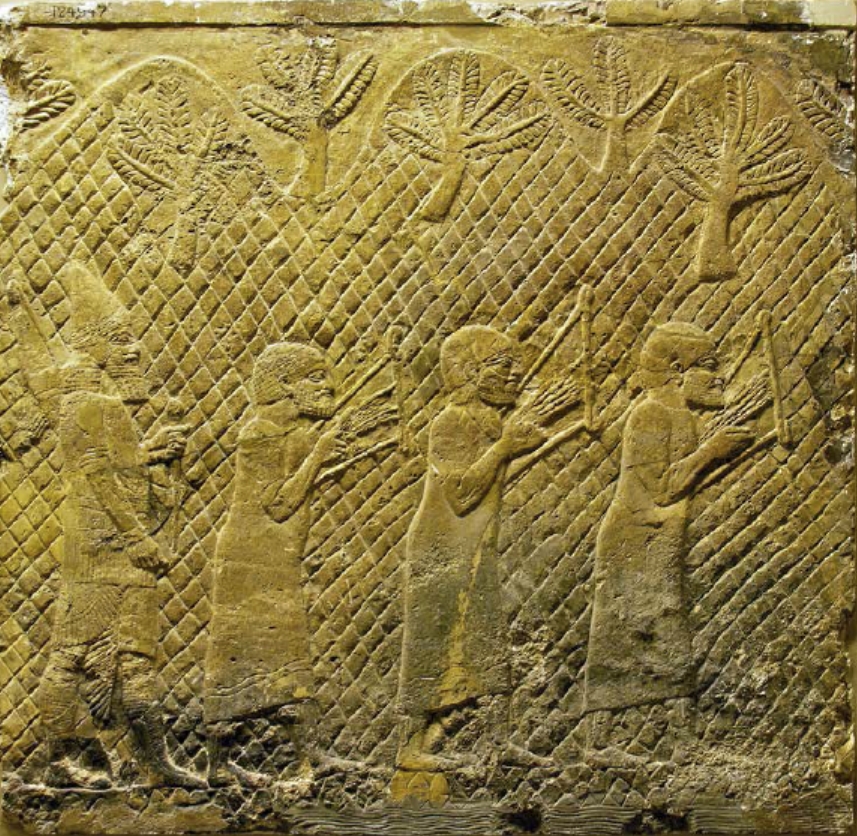 Relief from Sennacherib's palace in Nineveh (photo by Dr. Rivka Lebarun)
Relief from Sennacherib's palace in Nineveh (photo by Dr. Rivka Lebarun)
Stones of Jerusalem in Babylon
Rabbi Sherira Gaon, who lived in Babylon at a later time, wrote that when Jehoiachin, king of Judah, and his people went to Babylon close to the destruction of the First Temple, they brought stones and dirt from Jerusalem to construct a magnificent synagogue, expressing their longing and reverence for the Temple they were forced to leave behind. They built the synagogue to fulfill the verse 'For your servants have cherished its stones and grace its dust.'
This particular synagogue is identified with the ancient synagogue 'Shaf Veyativ' ("Migrate and Settle") located in the city of Nehardea in Babylon, which was an important Jewish center. The Jewish traveler Benjamin of Tudela mentions it in his writings: "And there [a house] of a synagogue built by Jews from the soil and stones of Jerusalem, and they called it 'Shafei veYativ' which is in Nehardea."
Jewish orientalist Jacob Obermeyer, who explored Babylon in the late 19th century while studying Jewish history in the region, noted in his monumental work about the geography during the Talmudic and Geonic eras that he identified this synagogue near the ruins of Nehardea, at a site called 'Tel-Knise'—a name echoing the historically important synagogue that once stood there.
Ezekiel the Prophet and Jewish Settlement in Babylon
Upon arriving in Babylon, the Judean exiles were dispersed in various settlements. Prophet Ezekiel, who was exiled to Babylon relatively early with King Jehoiachin and his retinue during the exile known as 'the exile of craftsmen and smiths,' provides information about their settlement. Ezekiel recorded his direct relationship, as a leader of the Judean exiles, with the elders of the exiles:
"I was sitting in my house, and the elders of Judah were sitting before me."
In his book, the prophet mentions the river 'Chebar' in Babylon:
"As I was among the exiles by the River Chebar... the heavens were opened, and I saw visions of God to Ezekiel son of Buzi the priest in the land of the Chaldeans [Babylon], by the River Chebar."
He also refers to a place called 'Tel Aviv' near the River Chebar, where a settlement of exiles existed:
"I came to the exiles Tel Aviv living by the River Chebar, and I sat there where they were living."
Other settlements of Judean exiles in Babylon are mentioned in the books of Ezra and Nehemiah with names like Tel Melah, Tel Harsha, Cherub Addon, and Immer.
Jewish Settlement in the City of Nippur
Researchers believe the River Chebar was a large canal stretching hundreds of kilometers. This canal branched from the Euphrates River, passing by and through the ancient city of Nippur in Babylon.
Archaeological excavations at Nippur began as early as 1851 by British archaeologist Austen Henry Layard and were extensively continued in 1888 by an expedition from the University of Pennsylvania led by archaeologist Hermann Vollrat Hilprecht, continuing into the 20th century. Hilprecht attempted to delineate the exact course of the River Chebar. In Nippur, tens of thousands of ancient Babylonian documents were found, some referring to an active water channel called 'River Kabbari,' indicating that boats and ships traveled the length of this channel, which likely corresponds to the biblical River Chebar.
In addition to these findings, Nippur harbored proofs of Jewish presence dating from the Babylonian Exile and later, such as numerous household items inscribed with Hebrew letters, and the archives of the Murashu family.
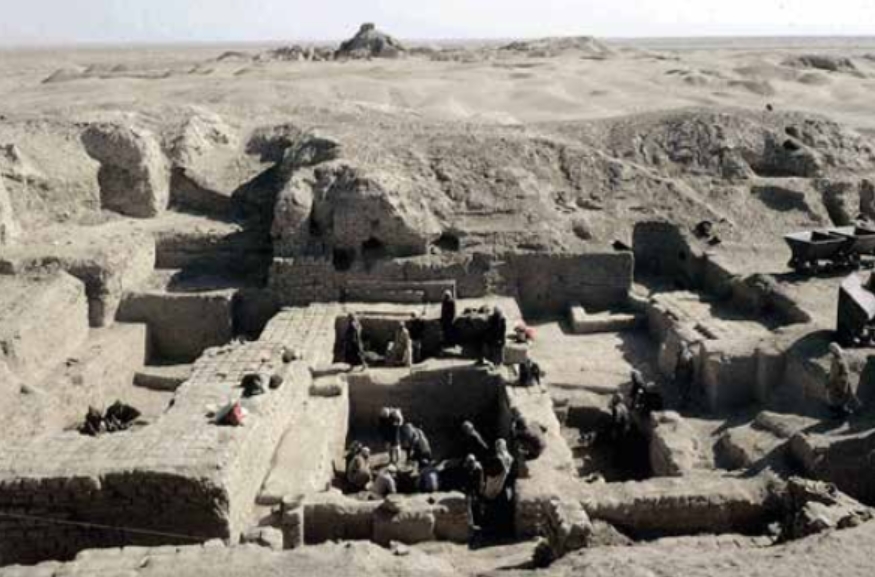 Ruins of Nippur as revealed by archaeological excavations near the early 20th century (The Oriental Institute of 2018 © The University of Chicago)
Ruins of Nippur as revealed by archaeological excavations near the early 20th century (The Oriental Institute of 2018 © The University of Chicago)
The Murashu Family Archives
A significant discovery for understanding the lives of Judean exiles in Babylon was the archive of the Murashu family, uncovered during John Henry Haynes’ excavations in Nippur in 1893. More than 700 documents written in Akkadian and Aramaic, along with over 600 seals, were recovered from the archive.
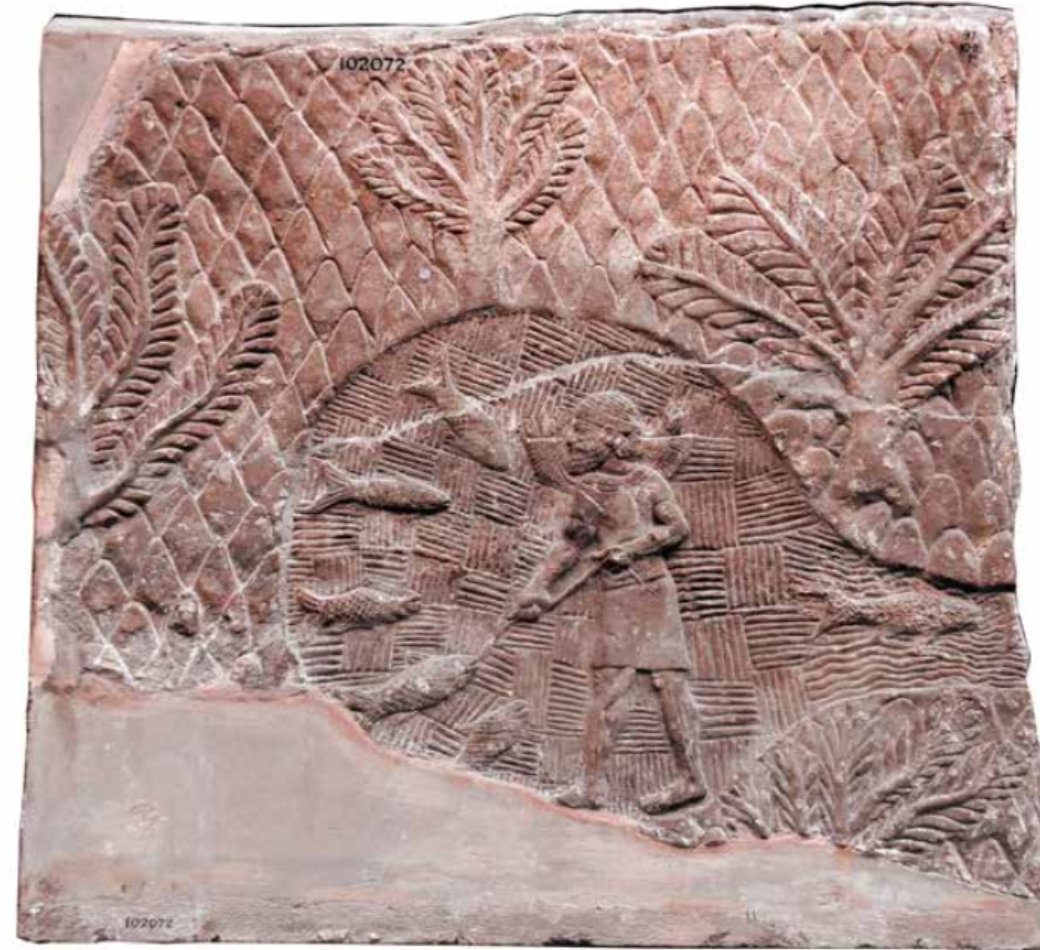 Fishing in ancient Babylon. Relief from Ashurbanipal's palace in Nineveh (Trustees of the British Museum)
Fishing in ancient Babylon. Relief from Ashurbanipal's palace in Nineveh (Trustees of the British Museum)Once deciphered, these documents revealed that the Murashu family were businessmen residing in Nippur in the period after Babylon fell to the Persians, around the 5th century BCE. The records span three generations of family history, though their Judaic ethnicity is uncertain. They were highly active in banking, trade, land management, and the supply of equipment and seeds to agricultural workers in the area, conducting business with the government.
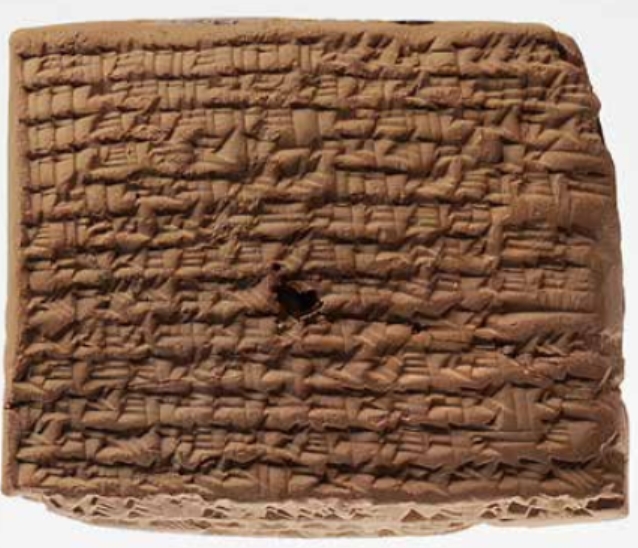 A clay tablet from the Murashu archive found in Nippur, Babylon. The archive documents mention Jews among the Judean exiles (Gift of Hermann V. Hilprecht, Expedition to Nippur III, 1896 Trustees)
A clay tablet from the Murashu archive found in Nippur, Babylon. The archive documents mention Jews among the Judean exiles (Gift of Hermann V. Hilprecht, Expedition to Nippur III, 1896 Trustees)The Murashu documents list over sixty Jewish names in Babylon and about one hundred Jewish families with whom the Murashu family engaged in business. These were identified as descendants of the Judean exiles. Notable names include Belida, Zabadiah, Hasdai, Hanani, Yehbaal, Mordechai ("Morduka" in local pronunciation), Adiah, Shalom, and others.
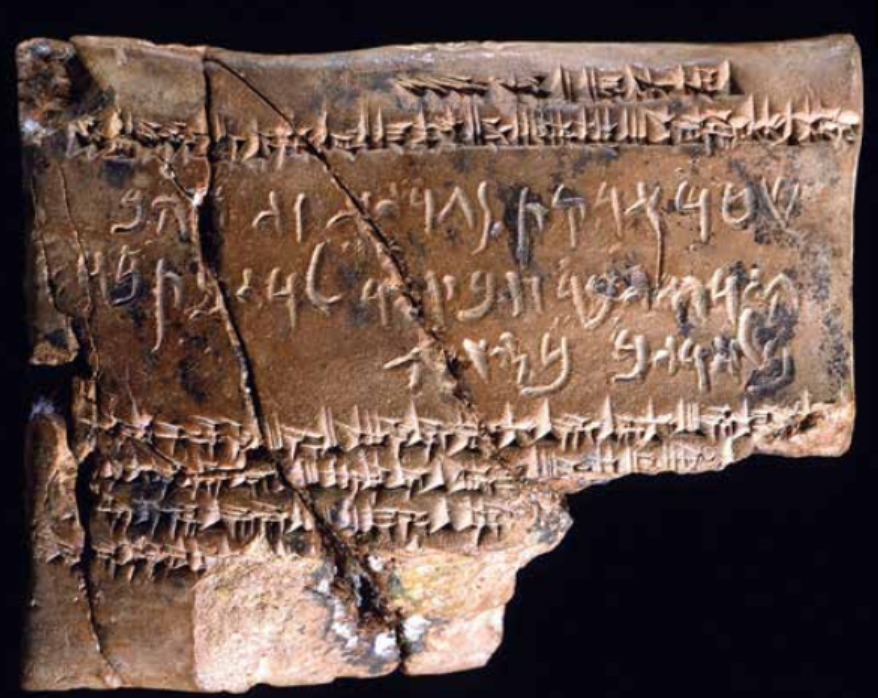 Clay tablet from the Murashu archive in Babylon bearing a three-year land lease. In addition to the Akkadian cuneiform on the edge of the tablet and its reverse, the center bears an Aramaic notation, a language understood by the Judean exiles.
Clay tablet from the Murashu archive in Babylon bearing a three-year land lease. In addition to the Akkadian cuneiform on the edge of the tablet and its reverse, the center bears an Aramaic notation, a language understood by the Judean exiles.Some Murashu documents are written in both Akkadian and Aramaic. Researchers suggest this was because the exiles from Judah did not understand the Akkadian cuneiform script widely used in Babylon and requested an Aramaic explanation or confirmation, which they could comprehend in addition to Hebrew.
To purchase the book 'Biblical Archaeology: Part IV,' click here.

